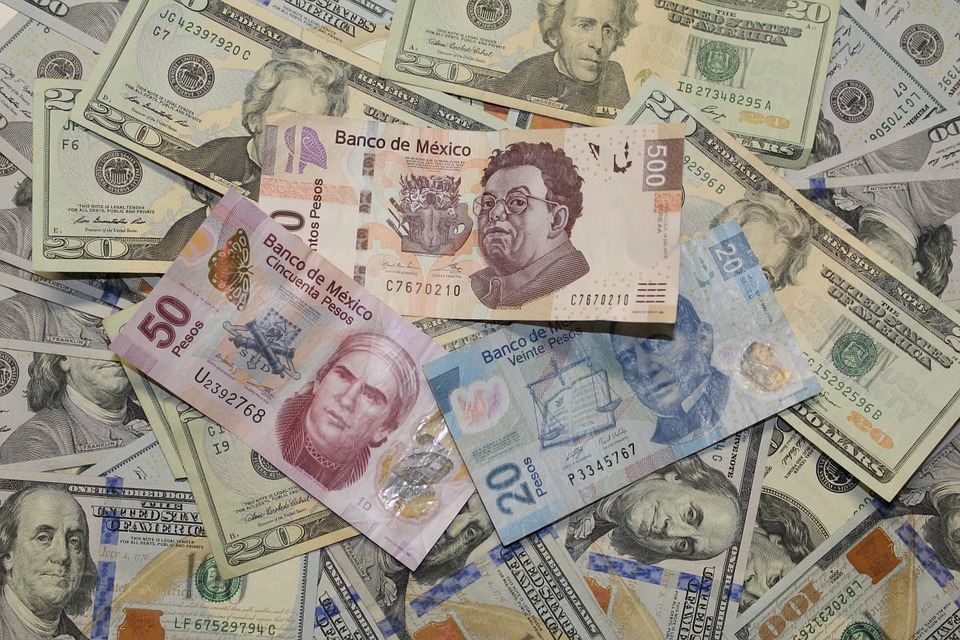It is the first time since last May when investors are actively forming "bullish" positions. This is evidenced by the latest data from the Commission on Trade in Commodity Futures USA.
Positions of "bears" reached a record level in October on the background of assumptions that Trump's promises to support production in the US would be a disaster for Mexico's export-dependent economy. This year, however, the peso has become the world's best currency, mainly because of investor's efforts.
With respect to the dollar, the Mexican currency rate increased by 11%, and this represents a striking difference with the record lows that were set after Trump's victory. The rally was prompted by an idea that sale of the peso was too vigorous because of lack of clarity regarding Trump's trade policy, as well as intricate comments from US officials.
Now Trump's plans for the future no longer seem as terrible as before. Currently, the White House in general is less active in talking about measures that could dramatically reduce Mexican exports to the US.
In addition, President Trump's administration probably decided to take a break, as it will be necessary to spend time and resources on explaining and defending its position regarding Mexico. This will further reduce the political capital necessary for reforming relations with Mexico and the NAFTA.
For the week ending March 28, the net long position of hedge funds was 8,361 thousand contracts. This is not much, yet compared to the "bearish" position of almost 100 thousand contracts in October, the situation looks a bit different.
In any case, the peso finished a long strip consisting of 10 quarters in a row, when its value was falling, and the monthly volatility was approaching the eight-month low.
The Mexican peso rate has been experiencing a serious pressure from the middle of 2014, when a sharp collapse in oil prices began. In 2016, Donald Trump’s victory in the presidential elections in the United States has become yet another reason for the peso weakening.
In total, since the early 1990s, Mexican peso collapsed from 32 US cents to 5 cents, meaning Mexican producers are not accustomed to a weak national currency. Thus, any strengthening of the currency turns out to be an unusual situation.
In fact, it is even necessary keep the peso from growing, while stabilizing it. Now there is a discussion of the possibility of updating the NAFTA agreement. Canada and Mexico are ready to meet the US, and, apparently, the new version will include a mechanism to ensure the currency’s stability.
In 2016, Mexico's trade deficit was $ 63 billion. This is only slightly inferior to Japan and Germany, so this is a matter of principle for America. At the same time, trade within NAFTA plays an important role for the United States.
Without the NAFTA, the trade deficit with Canada and Mexico would be about 3% more, so there will not be a drastic change in the agreement.
source: bloomberg.com
Positions of "bears" reached a record level in October on the background of assumptions that Trump's promises to support production in the US would be a disaster for Mexico's export-dependent economy. This year, however, the peso has become the world's best currency, mainly because of investor's efforts.
With respect to the dollar, the Mexican currency rate increased by 11%, and this represents a striking difference with the record lows that were set after Trump's victory. The rally was prompted by an idea that sale of the peso was too vigorous because of lack of clarity regarding Trump's trade policy, as well as intricate comments from US officials.
Now Trump's plans for the future no longer seem as terrible as before. Currently, the White House in general is less active in talking about measures that could dramatically reduce Mexican exports to the US.
In addition, President Trump's administration probably decided to take a break, as it will be necessary to spend time and resources on explaining and defending its position regarding Mexico. This will further reduce the political capital necessary for reforming relations with Mexico and the NAFTA.
For the week ending March 28, the net long position of hedge funds was 8,361 thousand contracts. This is not much, yet compared to the "bearish" position of almost 100 thousand contracts in October, the situation looks a bit different.
In any case, the peso finished a long strip consisting of 10 quarters in a row, when its value was falling, and the monthly volatility was approaching the eight-month low.
The Mexican peso rate has been experiencing a serious pressure from the middle of 2014, when a sharp collapse in oil prices began. In 2016, Donald Trump’s victory in the presidential elections in the United States has become yet another reason for the peso weakening.
In total, since the early 1990s, Mexican peso collapsed from 32 US cents to 5 cents, meaning Mexican producers are not accustomed to a weak national currency. Thus, any strengthening of the currency turns out to be an unusual situation.
In fact, it is even necessary keep the peso from growing, while stabilizing it. Now there is a discussion of the possibility of updating the NAFTA agreement. Canada and Mexico are ready to meet the US, and, apparently, the new version will include a mechanism to ensure the currency’s stability.
In 2016, Mexico's trade deficit was $ 63 billion. This is only slightly inferior to Japan and Germany, so this is a matter of principle for America. At the same time, trade within NAFTA plays an important role for the United States.
Without the NAFTA, the trade deficit with Canada and Mexico would be about 3% more, so there will not be a drastic change in the agreement.
source: bloomberg.com





